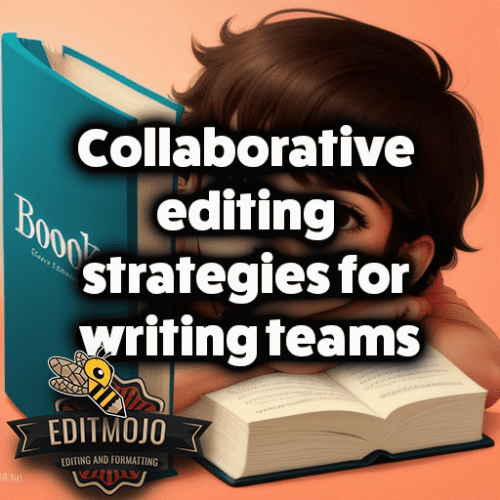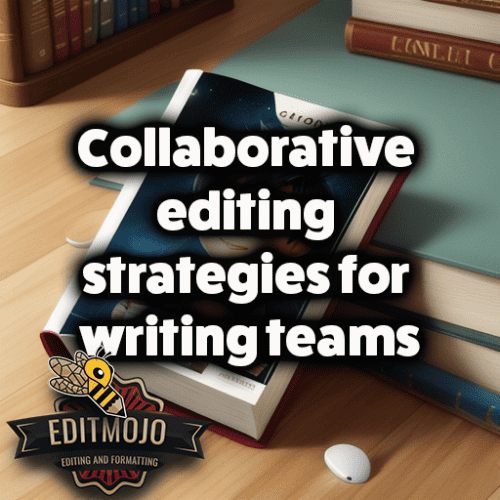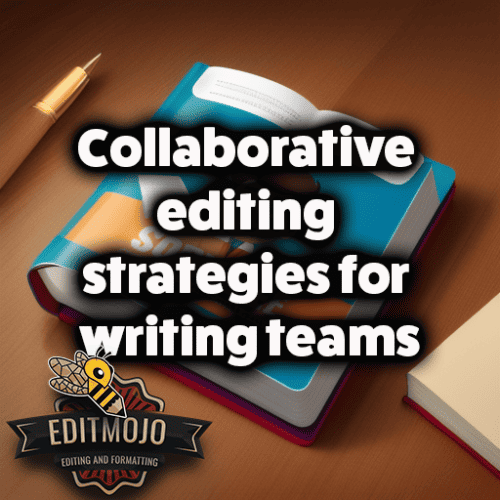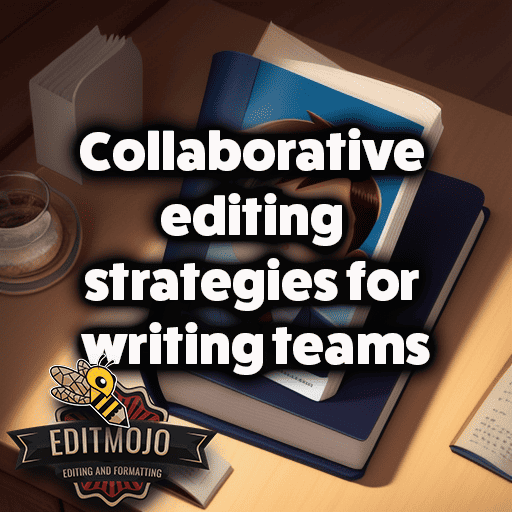Collaborative Editing Strategies for High-Performance Writing Teams. Collaborative editing is an integral part of the writing process, particularly in team settings where diverse ideas coalesce into a single, cohesive piece of writing. It’s a technique where multiple individuals contribute, revise, and polish a document to achieve a common objective. This practice harnesses the power of many minds and optimizes creativity, productivity, and quality. This post will delve into the depths of collaborative editing, shedding light on the strategies and tools that ensure successful outcomes and foster effective team dynamics.
Key Takeaway Table:
| Section | Key Takeaways |
|---|---|
| The Fundamentals of Collaborative Writing | Collaborative writing enhances creativity, improves quality, and increases productivity. However, it comes with challenges like conflicting opinions and unequal participation. |
| Types of Collaborative Editing | Collaborative editing can be concurrent, sequential, or review-based. Each type has its advantages and unique strategies. |
| Setting up a Collaborative Editing Framework | A robust collaborative editing framework involves common goals, defined roles, a collaborative platform, a workflow, a style guide, and an effective communication system. |
| Collaborative Editing Strategies | Essential strategies include active listening, constructive criticism, encouraging diversity of ideas, conflict resolution, iteration, and effective use of technology. |
| Popular Collaborative Editing Tools | Tools like Google Docs, Microsoft 365, and Quip can significantly enhance the collaborative editing process. |
| Overcoming Common Hurdles in Collaborative Editing | Clear expectations, open communication, and constructive feedback can help navigate common challenges in collaborative editing. |
| The Future of Collaborative Editing | Technologies like artificial intelligence could play a significant role in the future of collaborative editing. |
II. The Fundamentals of Collaborative Writing
Before we can truly understand collaborative editing, we must first grasp the fundamentals of collaborative writing.
A. Brief History and Evolution of Collaborative Writing
Though humans have been working together to create written works since time immemorial, the concept of collaborative writing came into the spotlight with the advent of modern technology and the internet. It has evolved from handwritten manuscripts to typewritten documents, shared digital files, and now to real-time editing platforms such as Google Docs and Microsoft 365.

B. Benefits of Collaborative Writing
Collaborative writing can lead to enhanced creativity, improved quality, shared learning, and increased productivity. By pooling their skills and knowledge, writers can create content that is richer and more nuanced than what one person could produce alone.
C. Challenges Encountered in Collaborative Writing
The benefits, however, come with a set of challenges – differences in writing style, conflicting opinions, communication gaps, and unequal participation. It’s crucial to address these challenges proactively to ensure the success of collaborative writing.
D. Role of Technology in Enhancing Collaborative Writing
Today’s technological advancements have made collaborative writing easier than ever. With real-time editing and commenting, teams can write and edit together seamlessly, irrespective of geographical boundaries.
III. Types of Collaborative Editing
Collaborative editing can take many forms:
- Concurrent Editing: Multiple team members edit the document simultaneously.
- Sequential Editing: Team members edit the document one after the other, in a predetermined order.
- Review-based Editing: The entire team reviews the document together, discussing changes and agreeing on revisions.
Each type has its advantages and requires a different set of strategies for successful implementation.
IV. Setting up a Collaborative Editing Framework
Setting up a robust framework for collaborative editing is critical. Let’s discuss the key steps:
A. Establishing Common Goals and Objectives
To ensure alignment, the team should agree on the purpose, audience, and key messages of the document.
B. Defining Roles within the Writing Team
Clear role definition enhances efficiency. Typical roles may include the initial writer, reviewers, and a final editor.

C. Setting up a Collaborative Writing Platform
Select a digital platform that supports real-time collaborative editing, such as Google Docs or Microsoft 365.
D. Implementing a Process Workflow
A defined workflow guides the sequence of writing, editing, and review, ensuring that everyone understands their responsibilities.
E. Drafting a Style Guide for Consistency
A style guide ensures consistency in language, tone, and formatting.
F. Establishing an Effective Communication System
Clear, open, and regular communication helps to clarify doubts, address issues, and share updates.
V. Collaborative Editing Strategies
Now, let’s delve into the core of our topic – the strategies to ensure effective collaborative editing.
A. Active Listening and Constructive Criticism
Listening is as crucial in writing as it is in conversation. Similarly, criticism should aim to build, not break.
B. Building
an Inclusive and Respectful Editing Environment
Inclusivity and respect foster a healthy editing environment. Everyone’s ideas should be considered, and differences in opinion should be addressed respectfully.

C. Encouraging Diversity of Ideas and Approaches
Diversity breeds innovation. Encourage team members to contribute unique ideas and editing perspectives.
D. Techniques for Conflict Resolution during the Editing Process
Conflicts can arise during the editing process. Having strategies in place for resolution – like discussion, compromise, or voting – can be very helpful.
E. Employing Iteration and Feedback Loops
Editing is an iterative process. Encourage continuous improvement through regular feedback loops.
F. Balancing Creativity with Editorial Rules
While creativity should be encouraged, it’s essential to maintain consistency and adhere to the agreed-upon style guide.
G. Utilizing Technology Effectively for Collaborative Editing
Leverage the power of technology to streamline the editing process and enhance communication among team members.
VI. Popular Collaborative Editing Tools
Selecting the right tools can make or break your collaborative editing process. Here are a few options:
A. Google Docs
This web-based tool allows real-time collaboration, commenting, and version tracking. Ideal for teams working remotely.
B. Microsoft 365
Similar to Google Docs but with advanced features suitable for large corporations.
C. Quip (Collaborative Editing Strategies for High-Performance Writing Teams)
This Salesforce tool combines documents, spreadsheets, and chat, making it a comprehensive collaboration platform.
VII. Case Study: Successful Collaborative Editing in Practice
Let’s look at the Atlassian Confluence team. They faced the challenge of coordinating writing efforts across different geographical locations. By implementing Google Docs for real-time collaboration, defining clear roles, and establishing an inclusive communication platform, they turned these challenges into their strength. They successfully created a comprehensive knowledge base that continues to serve as an invaluable resource for their customers and team members alike.
VIII. Overcoming Common Hurdles in Collaborative Editing
Challenges in collaborative editing are inevitable. However, by establishing clear expectations, encouraging open communication, and providing constructive feedback, you can navigate these hurdles and create a productive and enjoyable collaborative editing experience.
IX. The Future of Collaborative Editing
In the future, technologies like artificial intelligence (AI) could play an even more significant role in collaborative editing. Tools could potentially suggest edits based on commonly accepted grammar and style rules, flag potential inconsistencies, and even help with conflict resolution by analyzing past editing decisions.
X. Conclusion (Collaborative Editing Strategies for High-Performance Writing Teams)
Collaborative editing is both an art and a science. With the right strategies, a comprehensive framework, and a dose of patience and respect, your team can harness its collective knowledge and creativity to produce high-quality, impactful content.
XI. Additional Resources
For further reading, I recommend:
- “Writing Together: How to Transform Your Writing in a Writing Group” by Ede, L. and Lunsford, A.
- Online course: “Collaborative Writing and Editing” offered by Coursera
- Academic article: “Collaborative Writing in Industry: Investigations in Theory and Practice,” by M. Lay.
Happy collaborative editing! (Collaborative Editing Strategies for High-Performance Writing Teams)
Top Five Questions and Answers:
- Q: What is collaborative editing?
A: Collaborative editing is a technique where multiple individuals contribute, revise, and polish a document to achieve a common objective. - Q: What are the benefits of collaborative writing and editing?
A: Collaborative writing and editing enhance creativity, improve the quality of the final output, enable shared learning, and increase productivity by pooling the skills and knowledge of the team. - Q: What are the different types of collaborative editing?
A: Collaborative editing can take three main forms – concurrent editing, sequential editing, and review-based editing. - Q: What tools can help facilitate collaborative editing?
A: Several digital tools, like Google Docs, Microsoft 365, and Quip, support real-time collaborative editing and can be highly effective in a team setting. - Q: What strategies can help overcome challenges in collaborative editing?
A: Strategies for overcoming challenges include establishing clear expectations, encouraging open and regular communication, providing constructive feedback, and utilizing technology effectively.
